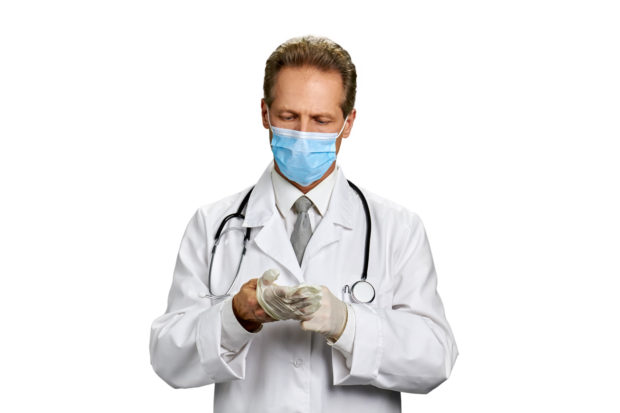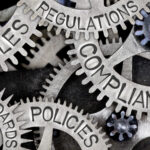Estimates of the size of COVID-19’s impact on the insurance industry vary widely, but some companies (including Chubb and Willis Re) have suggested that, considering both asset and liability losses, it will be the largest event in insurance history. In the sense of the size of industry loss, then, the coronavirus appears to be the latest candidate for the “next asbestos.”
Executive Summary
In a catastrophic scenario involving a second wave of COVID-19 cases occurring later this year, losses from “take-home” COVID-19 could exceed $50 billion—and even the first wave could mean awards and settlements of $27 billion, according to estimates from Praedicat. Here, Praedicat executives explain the concept of take-home exposure, drawing parallels to take-home asbestos lawsuits, which were based on the negligence of the employers whose workers created secondary disease exposure for family members.Unlike asbestos, which emerged through the U.S. legal system, early estimates for general liability losses from COVID-19 are lower than the predictions from business interruption or event cancellation lines. As an infectious disease spreading widely though the population, it seems challenging to blame infections on the actions or products of specific companies. Therefore, it may, at first glance, appear destined to only result in modest losses for general liability. A deeper review of the risk, however, suggests there are some precedents that could portend a larger loss, and they come precisely from asbestos.
Many of the innovations in tort law, the underlying legal system driving liability risk, have come from asbestos. After several scientific studies in the 1960s found that insulation workers had elevated risk of asbestos-related diseases, the Eastern District of Texas court established in 1971 (Borel v. Fibreboard Paper Products) that insulation workers could sue the product manufacturers responsible for putting the asbestos in the product. This innovation in tort law launched a major wave of asbestos litigation driving general liability losses in the 1970s.
Later, numerous scientific studies found elevated rates of asbestos-related diseases among families of asbestos workers as well. A study (Vianna and Polan) in 1978, for instance, found that family members of asbestos workers were 10-times more likely to have mesothelioma than otherwise equivalent individuals. (Reference: Vianna NJ, Polan AK. Non-occupational exposure to asbestos and malignant mesothelioma in females. Lancet. 1978;1(8073):1061‐1063. doi:10.1016/s0140-6736(78)90911-x)
Subsequently, in the mid-2000s, courts began to award damages to spouses and children of asbestos workers as well. This wave of litigation, referred to as “secondary” or “take-home” exposure lawsuits, has been an important factor in the later waves of asbestos litigation. One characteristic of the take-home asbestos litigation is that the basis of the lawsuit is the negligence of the employer itself, rather than a product defect for some supplier. As such, it potentially increases the footprint of the risk outside product exposures, and therefore doesn’t just implicate the suppliers but now the employers themselves.
COVID-19 is not a product risk like asbestos. But it is an occupational risk, as workers in hospitals, nursing homes, “essential” retail, meat production, construction and other industries face elevated rates of transmission, magnified by stay-at-home orders that concentrate transmission within the businesses that remain open. As early as February 2020, published scientific studies from Wuhan identified one of the coronavirus’s key risk characteristics as a high degree of intra-family and intra-household transmission. Frequently, workers who are not from vulnerable populations are exposed to COVID-19 at work; then family members, such as spouses or parents, are exposed at home.
Unlike transmission of COVID-19 to customers or transmission in the wider community, where a specific source of exposure may be difficult to prove, take-home COVID-19 for the parent of a nursing home worker, for instance, is relatively straightforward to connect to the specific nursing home. Furthermore, virus tracking using genetic sequencing of potentially linked infections can help associate or dissociate the worker or family member’s infection from other potential sources. In this sense, take-home or secondary exposure for COVID-19 is a significant phenomenon supported by science, forensics and legal precedent, and therefore may become a significant liability risk as well.
Praedicat has developed scenarios for “take-home” COVID-19 liability risk. We estimate that approximately 13 percent of COVID-19 deaths are family members of workers who acquired their illness at work. In a scenario where the ultimate size of the U.S. pandemic is 150,000 deaths, a level predicted by the Institute for Health Metrics and Evaluation at the time of this writing, the scenarios suggest a range of awards and settlements between $11.4 billion and $27.4 billion, depending on the degree to which courts accept this cause of action. In a catastrophic scenario where a second wave of COVID-19 cases occurs in the fall and winter and the ultimate size of the pandemic in the United States is 300,000 deaths, the losses could exceed $50 billion.
These losses would be broadly spread across industries ranging from healthcare to retail and would involve companies of all sizes. If these losses emerge and are covered by insurance, general liability alone will elevate COVID-19 to “next asbestos” levels.
Take-home asbestos liability has not been uniformly accepted by courts across the United States. Indeed, New York State, which has seen the largest number of COVID-19 deaths, rejected take-home asbestos liability. Other states with large numbers of cases, including Washington, California, New Jersey and Louisiana, have accepted it.
We do not know if take-home COVID-19 will be interpreted the same way as take-home asbestos. Even if the cause of action is accepted, the question of coverage on general liability is unclear, as there may be infectious disease exclusions or the pollution exclusion may apply. There may even be liability protections or alternative compensation mechanisms enacted in various states to assist the recovery from COVID-19’s economic impact. Nonetheless, given the “social inflation” environment that existed as COVID-19 emerged, it is reasonable that insurers should prepare for an adverse “take-home COVID-19” liability landscape while hoping for the best.





















 Viewpoint: Agentic AI Is Coming to Insurance Industry – Much Faster Than You Think
Viewpoint: Agentic AI Is Coming to Insurance Industry – Much Faster Than You Think  Legal Finance and Insurance: From Confusion to Collaboration
Legal Finance and Insurance: From Confusion to Collaboration  Demystifying the Data Landscape: Lake, Warehouse and Lakehouse Explained
Demystifying the Data Landscape: Lake, Warehouse and Lakehouse Explained  Viewpoint: Mapping Evolving Regulatory Terrain for MGAs, MGUs and Other DUAEs
Viewpoint: Mapping Evolving Regulatory Terrain for MGAs, MGUs and Other DUAEs 















